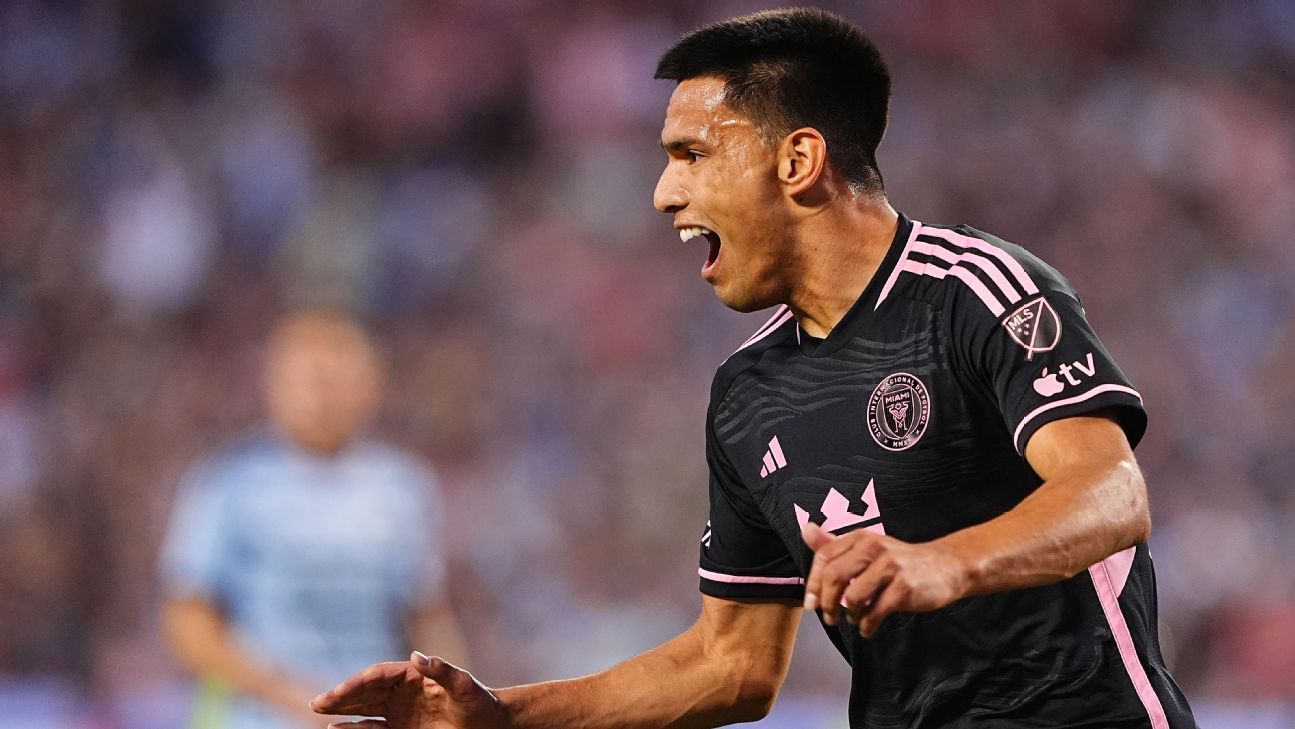Outside of domestic and homegrown signings, no group of players is more important to Major League Soccer than South Americans.
This argument could be made on talent alone from a collection of players headlined by the likes of global superstar Lionel Messi. But what’s just as significant is the impressive quantity of figures that populate teams across the region.
When the league announced its player demographics report last summer, a list of the top five countries represented had Argentina, Brazil and Colombia following the United States and Canada. In fact, beyond California and New York, no U.S. state provided more players to MLS in 2024 than the three South American countries noted above.
And when you add Uruguay, Venezuela, Paraguay and others, the full list of representation is a noteworthy one for the league.
So why MLS? What’s the appeal of the league and how are clubs pulling in so many names from South America? — Cesar Hernandez
MLS’ elevator pitch to South Americans
Promising young South American players often have little say in where football will take them.
Editor’s Picks
2 Related
If a bid comes in, they are frequently surrounded by powerful interests. Their club might need the money to pay the wage bill. Their agent might be dreaming of a big commission. There is often a family — frequently in an extended version — to support. So the message can be: take the offer and sign the deal today, because tomorrow you might get injured. If the offer comes from MLS, then so be it.
It’s not the case, then, that every South American player who makes his way north is living out a deeply held dream to play in MLS.
There are benefits, though, and the prospect of playing with or (more probably) against Messi and Luis Suárez is not the main one. Nor is the prospect of playing in a competition that clearly has some sense of momentum, where there is a justified expectation of being paid on time and of avoiding some of the social problems of home. Although these are all good selling points, for the truly ambitious, there is something else.
Brazilian striker Talles Magno spent some time with New York City FC and, speaking to Globo Esporte, he showed admirable sincerity.
“A problem was that I left Vasco da Gama with the idea that the MLS was not so strong, but it was totally different from what I had expected,” he said. “I thought I’d be in the first team, and be one of the best, but everyone was faster than me.
“It was a shock for me. I had to work hard to develop this. The game there is quicker than in Brazil, the ball circulates faster and the teams are more compact, one player close to the other, with a lot of physical contact. It’s more like Europe than Brazil.”
He makes an important point and, as word gets around in football, one that can encourage South American players to head north. MLS can serve as a kind of halfway house on the way to Europe: shine in the States and earn a move across the Atlantic.
Diego Gómez’s great performances for Inter Miami has earned him a move to Premier League side Brighton & Hove Albion at just 21. (Photo by Kyle Rivas/Getty Images)
There is a risk there, though. The top European clubs look to acquire their talent from outside the continent as young as possible — preferably at 18.
Arguably, it took Miguel Almirón a little too long to arrive at Newcastle United, after working his way through Paraguay and Argentina before moving to Atlanta United. Others have perhaps learned the lesson. Aston Villa‘s Jhon Durán and Brighton & Hove Albion‘s Diego Gómez got to the Premier League quicker.
In the case of Gómez, he has been living the dream. He won the Paraguayan league, played with Messi for 18 months, and is now at Brighton before the age of 22. That’s the way to do it. — Tim Vickery
Success stories paving the way
There’s a power of knowing your place in the pecking order of world soccer, and despite a repeated desire by those in charge of wanting to become an elite league, MLS and its clubs have been able to win players over with their status as a launching pad for players with hopes of playing in Europe.
“There’s a lot of examples of players that we transferred to Europe, so coming to MLS is a great next step,” Andre Zanotta, FC Dallas‘ chief soccer officer/sporting director, told ESPN. For him, it’s a simple exercise to highlight those who have utilized Dallas as a platform.
“We have [Crystal Palace‘s] Chris Richards, we have [Westerlo‘s] Bryan Reynolds, [PSV Eindhoven‘s] Ricardo Pepi, [Lyon‘s] Tanner Tessmann,” Zanotta said. “Carlos Gruezo we signed from Germany and transferred back to Germany.”
STREAM FUTBOL AMERICAS ON ESPN+
Herculez Gomez and Cristina Alexander debate the biggest storylines and break down the best highlights that soccer in the Americas has to offer. Stream on ESPN+ (U.S. only)
Looking across the league, he has brought up other success stories such as Durán and Gómez. Kurt Schmid, sporting director for Real Salt Lake, uses the same strategy when trying to persuade any potential signing.
“I use this pitch on everybody, not just South American talent,” Schmid said to ESPN. “I think one pitch is obviously the stepping stone aspect, and so us showing the proof of the concept of transferring young players that we’ve developed to Europe.”
The increased support of the league, as seen predominantly through record attendance numbers, is also a factor. It’s impossible to say whether that reflects sustainable, long-term growth or is simply the result of soccer’s greatest ever player joining the league, but MLS and its clubs are justified in boasting about their historic number of fans in 2024.
“When I’m speaking with players, I talk to them about how the audience is growing here, how much more people are going to the stadiums,” Zanotta said. “We, in our case, we sold out every home game last season.”
Apart from the chance to play in increasingly full stadiums, there are other draws for young players considering MLS. There’s still the opportunity to play alongside and against names like Suárez, Olivier Giroud, Marco Reus, Lorenzo Insigne, and of course, Messi.
“What MLS has always been,” Zanotta said, “[is] a league with amazing stars, international stars.”
Even if you don’t have the capabilities to become the next global game-changer or don’t have European dreams, one other pitch that’s also offered up is stability.
“Whichever club it is, [whether] it’s RSL, LAFC, Inter Miami, Colorado, it doesn’t matter, if you achieve your goals on the field, you can achieve your goals off the field,” Schmid said. “You can stay in this league and even at that same club and earn the money that you deserve by playing well, whereas a lot of times, if they take that step to Europe right away, and they’re coming in at that entry-point club, maybe it’s the second division in some country, or they’re in a smaller country in the first division — if they succeed, they have to move, they cannot make their money there, they have to go somewhere else.
“You could be here for a decade if you’re a young player when you come here and fulfill your dreams, both financially and on the field.” — Hernandez







